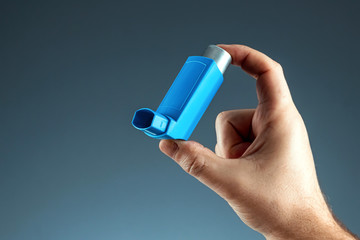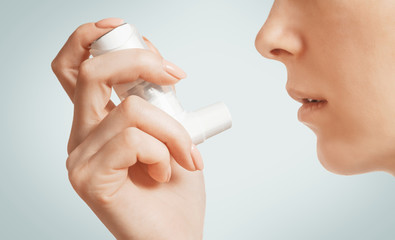Breolipta, known as Breo Ellipta, is a prescription inhaler that helps people manage breathing problems caused by asthma and chronic obstructive pulmonary disease (COPD). It’s a once-daily medication that combines two important ingredients: fluticasone furoate, which is a corticosteroid that reduces inflammation in the airways, and vilanterol, which is a long-acting bronchodilator that helps keep the airways open for easier breathing. Together, these ingredients work to control long-term symptoms like shortness of breath, wheezing, and chest tightness. Unlike rescue inhalers that act fast during an attack, Breolipta is designed to prevent flare-ups and help patients maintain steady breathing over time.
Why Breolipta Is Used for Asthma and COPD
Doctors prescribe Breolipta to people who struggle with breathing problems every day due to asthma or COPD. These conditions cause the airways in the lungs to become narrow or swollen, making it difficult for air to flow smoothly. Breolipta works by calming the inflammation inside the lungs and relaxing the muscles around the airways. As a result, people using it regularly often experience fewer asthma attacks and less coughing or wheezing. However, it’s important to note that Breolipta does not cure asthma or COPD—it simply helps control the symptoms and improve quality of life when used consistently.
How Breolipta Works Inside the Lungs
Let’s break it down simply: Breolipta works in two ways at once. First, the fluticasone furoate part reduces swelling and mucus buildup in the airways. This makes breathing smoother and more comfortable. Second, the vilanterol component relaxes the muscles around those same airways, helping them stay open longer. The combination means air can move more freely in and out of the lungs. Over time, this dual action reduces breathing difficulties, lessens flare-ups, and allows users to go about daily activities with fewer interruptions from respiratory symptoms.
The Importance of Using Breolipta Daily
Here’s the thing—Breo Ellipta, or Breolipta, only works well if it’s used every single day. Missing doses can cause symptoms to return or get worse. Even when you feel fine, your lungs might still be inflamed. Daily use keeps the medication active in your system, providing steady relief and protection from flare-ups. That’s why doctors emphasize building a routine, like taking Breolipta at the same time every morning. It’s not a rescue inhaler, so it shouldn’t be used during sudden attacks. Instead, think of it as a daily shield for your lungs.
The Correct Way to Use Breolipta
Using Breolipta correctly matters a lot. Start by opening the inhaler cover until you hear a click—that click means a dose is ready. Exhale completely before placing the mouthpiece between your lips. Then take a long, steady, deep breath through the mouth, not the nose. Hold your breath for about five seconds to let the medicine settle into your lungs. Finally, exhale slowly. Always rinse your mouth with water afterward and spit it out. This step prevents oral thrush, a common side effect caused by leftover steroid medicine in the mouth.
What Makes Breolipta Different from Other Inhalers
Compared to many other inhalers, Breolipta is easier to use because it delivers a consistent dose with a simple one-click mechanism. It’s a dry powder inhaler, meaning it doesn’t require pressing a canister or coordinating your breath with a spray. That simplicity makes it especially useful for older adults or anyone who struggles with complicated inhaler devices. Another big advantage is that it’s taken once a day—no need to remember multiple doses. The combination of fluticasone and vilanterol provides long-lasting relief that helps control symptoms for a full 24 hours.

The Science Behind Breolipta’s Ingredients
Let’s look at the two main ingredients. Fluticasone furoate is a corticosteroid that works to reduce inflammation deep in the airways, lowering mucus production and swelling. Vilanterol, on the other hand, is a long-acting beta-agonist (LABA) that relaxes airway muscles and improves airflow. These two medicines complement each other perfectly: one targets inflammation while the other targets muscle tightening. Together, they make Breolipta one of the most effective maintenance inhalers available for chronic lung conditions like asthma and COPD.
Breolipta for Asthma Patients
For people with asthma, Breolipta helps prevent symptoms from interfering with daily life. It reduces inflammation that causes the airways to tighten, making it easier to breathe. Many users notice they can sleep better, exercise more comfortably, and experience fewer night-time coughing episodes. However, it’s important that patients never stop using Breolipta suddenly without their doctor’s advice, as doing so could trigger serious breathing problems. Regular medical follow-ups help ensure that the dose remains right for the user’s condition and symptom level.
Breolipta for COPD Patients
People living with COPD—chronic obstructive pulmonary disease—often experience persistent coughing, shortness of breath, and frequent chest infections. Breolipta can make a big difference by helping keep the lungs more open and reducing inflammation. Over time, it can lower the number of flare-ups, also known as exacerbations. Because COPD is a long-term disease, consistent use of Breolipta helps improve breathing endurance and makes daily activities like walking or climbing stairs less tiring. However, it’s not meant to treat sudden COPD attacks—that’s what a rescue inhaler is for.
Common Side Effects of Breolipta
Like most medications, Breolipta can cause some side effects, though not everyone experiences them. Common ones include throat irritation, hoarseness, headache, and mild coughing right after inhalation. Some users might develop oral thrush, a white patch infection in the mouth, especially if they skip rinsing after use. Occasionally, people report muscle pain, dizziness, or mild flu-like symptoms. These effects are usually temporary and go away with time. However, if you experience chest pain, irregular heartbeat, or difficulty breathing after using Breolipta, seek medical help immediately.
Serious Risks and Warnings
Although Breolipta is generally safe, it comes with some important warnings. Long-term use of corticosteroids like fluticasone can weaken the immune system, increase the risk of infections, and affect bone density. Some users may be at higher risk for pneumonia, especially those with COPD. It’s also important not to use Breolipta alongside other long-acting beta-agonists, as that could increase heart-related side effects. People with heart conditions, high blood pressure, or thyroid problems should always consult their doctor before starting this medication.
What to Do If You Miss a Dose
If you forget to take Breolipta at your usual time, take it as soon as you remember on the same day. However, if it’s almost time for your next scheduled dose, skip the missed one—don’t double up. Doubling doses doesn’t make up for missed medicine and can cause unwanted side effects like tremors or rapid heartbeat. To avoid forgetting, it helps to set a daily reminder on your phone. Consistency is key to getting the most benefit from Breolipta and keeping symptoms under control long-term.

The Importance of Rinsing After Use
Rinsing your mouth after using Breolipta might seem like a small step, but it’s very important. This simple action helps prevent a fungal infection called oral thrush, which appears as white patches inside the mouth. Since Breolipta contains a steroid, some of the medication can stick to the tongue or throat after inhalation. By rinsing and spitting, you wash away the leftover particles, keeping your mouth healthy. Skipping this step might lead to soreness, hoarseness, or discomfort while eating and drinking.
How Long It Takes for Breolipta to Work
Breo Ellipta doesn’t work instantly like a rescue inhaler. Instead, it builds up its effects over time. Some people start noticing easier breathing within the first few days, but full benefits usually appear after a couple of weeks of daily use. The goal is to maintain steady medication levels in your lungs, not to stop sudden symptoms. This is why doctors often say, “Stick with it.” Even when you feel better, you should continue using Breolipta unless your healthcare provider tells you to stop.
Comparing Breolipta with Other Inhalers
There are many inhalers on the market, like Symbicort, Advair, and Spiriva, but Breolipta stands out for its once-daily convenience and strong dual-action formula. While some inhalers need two doses a day, Breolipta simplifies the routine with a single daily inhalation. Its dry powder form also eliminates the need for shaking or timing sprays with breaths, which many patients find challenging. Because of its simplicity and effectiveness, Breolipta has become one of the preferred maintenance inhalers for both asthma and COPD management.
Storage and Handling Tips
Proper storage helps keep Breolipta effective. Always keep it in a cool, dry place away from moisture and direct sunlight. Don’t store it in the bathroom where humidity levels are high. Once you open the inhaler, use it within six weeks, even if some doses remain. Check the built-in dose counter to see how many doses are left—it automatically counts down each time you open the lid. When the counter hits zero, the inhaler should be replaced immediately, even if it still clicks.
Talking to Your Doctor Before Using Breolipta
Before starting Breolipta, it’s crucial to discuss your medical history with your doctor. Let them know if you have heart problems, liver disease, diabetes, high blood pressure, or any ongoing infections. Tell them about all the medications you’re taking, including over-the-counter drugs or supplements, as some might interact with Breolipta. Your doctor will evaluate whether this inhaler is the right fit for you, decide the correct dose, and explain how to use it safely. Open communication ensures that your treatment remains both effective and safe.
Breolipta and Long-Term Health Benefits
When used properly over the long term, Breolipta can significantly improve breathing comfort and reduce hospital visits due to severe flare-ups. It allows patients to live more active lives with fewer breathing interruptions. Regular use also helps slow down the progression of COPD symptoms and improves lung performance. Because of its consistent action, Breolipta helps users enjoy more stable days and better sleep at night. The real success of this inhaler lies in adherence—taking it every day as part of a healthy respiratory care routine.
Breolipta’s Role in Modern Respiratory Care
In the modern world of respiratory medicine, Breolipta represents progress in managing chronic lung conditions. It combines advanced pharmaceutical technology with patient-friendly design. Doctors prefer it for its long-lasting effect, and patients appreciate its simplicity. It’s a prime example of how once-daily medications can transform complex treatment plans into something more manageable. With the growing number of people affected by asthma and COPD worldwide, Breolipta continues to play a key role in helping patients breathe better and live fuller lives.
Conclusion
To sum it up, Breolipta is more than just an inhaler—it’s a daily tool for better breathing. With its dual-action formula, simple design, and long-lasting relief, it gives users control over their respiratory health. But remember, consistency matters more than anything. Using it regularly and correctly, following up with your doctor, and rinsing afterward are small habits that lead to big improvements. Whether you’re managing asthma or COPD, Breolipta offers a practical, reliable way to take charge of your breathing health every single day.
Frequently Asked Questions (FAQs)
Q1: What is Breolipta used for?
Breolipta (Breo Ellipta) is used to manage and prevent breathing issues in people with asthma or COPD. It reduces inflammation and helps keep airways open.
Q2: Can Breolipta be used during an asthma attack?
No. Breolipta is not a rescue inhaler. It’s a maintenance medication meant to prevent attacks, not stop them once they start.
Q3: How often should I use Breolipta?
It should be used once daily at the same time each day. Skipping doses can reduce its effectiveness.
Q4: What happens if I forget to rinse my mouth after using Breolipta?
Not rinsing can lead to a mouth infection called oral thrush. Always rinse and spit after each use.
Q5: Is Breolipta safe for children?
Breo Ellipta can be prescribed for children aged 5 and above with asthma, but only under medical supervision.
Read also: ct3309361 Meaning, Use, and Modern Relevance













